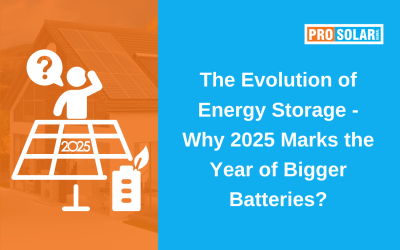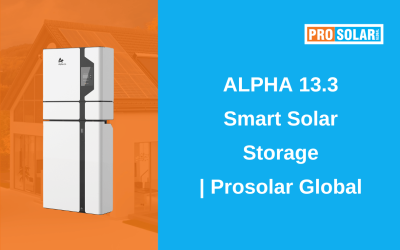Australia is going through a serious expansion in battery storage—both large, grid-scale batteries and smaller home systems. These are not just clean energy toys; they have real, practical implications for household energy bills, grid stability, and how we consume electricity. For 2025, several policies, technology cost declines, and market changes are converging to make batteries more relevant than ever.
1. What is driving the growth in battery storage
- Government policy support: As of 1 July 2025, the Cheaper Home Batteries Program begins, offering a ~30% discount on the upfront cost of installing small-scale batteries alongside rooftop solar.
- Targets and pledges: The Labor Government has committed A$2.3 billion to this battery subsidy program, aiming for over 1 million new batteries by 2030.
- Cost declines: Battery technology and associated systems are becoming cheaper. Over recent years, installation costs, battery unit prices, and payback periods have all improved.
- More large-scale/project battery storage: Grid-scale batteries (sometimes called “big batteries”) are being deployed more widely. They help the grid absorb excess renewable generation (like solar and wind), stabilize supply, reduce reliance on peak fossil fuel generation, and generally smooth out price spikes.
2. How bigger batteries help reduce costs for households
These improvements do not just benefit policy makers or energy markets in abstraction—they can directly lower what you pay. Here’s how:
| Mechanism | How it saves you money |
| Time-shifting energy | Store solar energy generated during the day and use it in the evening when grid electricity is more expensive. Less “imported” power from the grid during peak hours means lower usage charges. |
| Reducing exposure to peak-demand pricing | Because batteries can help flatten the peaks, there’s less need for retailers and generators to charge “peak premiums” in the evening or on high-demand days. This can reduce both wholesale and retail components of bills. |
| Lower transmission and network charges over time |
Big batteries help the grid by reducing stress on lines, reducing the need for expensive upgrades and “peaking” generation. Those savings can flow through in network cost components of bills (these are often passed on). |
| Government rebates and subsidies | The Cheaper Home Batteries Program promises direct cost savings: e.g. households with existing solar could save around AUD 1,100 per year by adding a battery, and those who install both solar + battery could save up to AUD 2,300/year. |
3. What to expect in 2025: what households should prepare for
If you’re a homeowner or considering upgrading, here’s what 2025 will bring and what it means practically:
- Improved payback period: With subsidies, many household battery+solar systems are seeing payback periods of ~7 to 8 years instead of longer, sometimes above 10 years before incentives.
- Larger savings for solar-installed homes: If you already have rooftop solar, adding a battery system under the subsidy could knock off ~$1,100/year from your bill. If you’re installing both solar and battery, savings might reach ~$2,300/year.
- Gradual phase-down of subsidies: As battery costs fall, subsidy levels under the Cheaper Home Batteries Program are expected to gradually decline. Early adopters in 2025 will benefit most.
- More options in battery size and type: Eligible systems tend to be in the 5-50 kWh range, with some state‐level support adding further incentives. Larger home battery systems are becoming more practical.
4. Grid-scale (big batteries) and community/utility effects
It’s not just individual homes. Bigger batteries deployed by utilities or at a neighbourhood/community scale also have spillover benefits that help lower energy costs for everyone:
- Wholesale price smoothing: Big batteries can buy when electricity is cheap (e.g. when solar or wind output is high) and deliver when it’s expensive, which helps reduce wholesale price volatility. This can reduce what retailers pay, which eventually influences retail prices.
- Avoided need for expensive peaker plants: On hot summer evenings when demand spikes, grid batteries can reduce the need to fire up expensive gas peaker plants. These often have high marginal costs that feed through into bills.
- Reduced infrastructure investment: Grid reinforcement, transmission and distribution upgrades for peak periods are costly. If batteries reduce peak loads, the cost burden of those upgrades can be lowered. Less new infrastructure needed means lower network-cost components in bills over time.
5. What means “bigger batteries” in practice
To ensure clarity, when this article refers to “bigger batteries” it includes:
- Grid-scale battery/utility-scale storage systems (often very large, sometimes hundreds of MW / MWh capacity), which help stabilise the grid.
- Medium-sized community / shared storage (e.g. for a suburb or several households).
- Home batteries paired with rooftop solar (5–50 kWh typical for many households).
Each scale plays a different role, but they all contribute to lowering the overall cost of delivering electricity.
6. Barriers and what might limit savings
While the upside is significant, there are still challenges, and in some cases the full potential won’t be realised unless certain issues are addressed.
- Upfront costs / financing: Even with subsidies, battery systems are a capital investment, so financing or credit terms matter. Some households may still find upfront cost a barrier.
- Regulation & tariffs: How feed-in tariffs, export payments, demand charges, and time-of-use tariffs are set will influence how much savings are possible. If export pay is very low, or grid fees are structured badly, gains are smaller.
- Grid constraints: In some areas, the grid may not support high export or installation without upgrades, which can add cost.
- Batteries degrade; warranties and real-life performance matter. Also, the trade-offs between cost vs performance vs life need to be considered.
- Equity & access: Renters, apartment dwellers, or those without suitable solar roofs may not benefit easily from home battery programs.
7. Bottom line: what you (the consumer) can do
If you want to make this trend work in your favour in 2025, here are practical steps:
- Check eligibility for the Cheaper Home Batteries Program as soon as possible, calculate how much subsidy and savings you can get.
- Evaluate adding a battery if you already have solar. Even a modest system can save a few hundred dollars a year on your electricity consumption during non-solar hours.
- Consider your electricity tariff. If you are on a time-of-use plan or have peak demand penalties, shifting consumption with a battery can yield higher savings.
- Compare battery brands, warranties, capacity, and degradation so you pick a system that gives reliable service over its lifetime.
- Explore community/shared storage options if home installation is impractical. Sometimes neighborhood or strata (apartment building)-scale batteries make more sense.
8. What Australia’s Bigger Batteries Mean for Your Energy Bills in 2025: Summary
- Thanks to subsidies like the Cheaper Home Batteries Program, more households will be installing battery storage.
- For homes with solar, adding a battery in 2025 could reduce annual electricity bills by ~AUD 1,100; for those adding both solar + battery, up to AUD 2,300 savings.
- Grid-scale and community battery systems help smooth out demand spikes, reduce reliance on expensive generation, and reduce network costs — indirectly pulling down costs for all power users.
- Over time, as more batteries are installed and costs fall, the payback periods improve, making the investment more attractive.
FAQ
Q: How much can I save on my electricity bill by installing a home battery? A: If you already have rooftop solar, adding a battery under current subsidy schemes (2025) could save around AUD 1,100/year. If installing solar + battery together, savings could be up to AUD 2,300/year.
Q: What is the payback period for a residential battery system in 2025 with subsidies? A: With the current subsidies (e.g. under the Cheaper Home Batteries Program), a typical home battery payback period is now around 7–8 years. Without subsidies, it’s longer.
Q: Will having a battery help everyone’s electricity bill, or just mine? A: Both. Individually, a battery helps lower your personal usage from the grid and reduce costs. But collectively, large-scale battery deployment helps the entire system by easing peak demand, smoothing wholesale prices, and limiting the need for expensive “peaking” infrastructure. That can help reduce costs for all consumers over time.
Q: Do batteries make sense in locations with low solar potential or in apartments? A: It depends. If solar access is limited, batteries still help if they can be charged during off-peak cheap times or via shared solar systems. But return on investment will be slower. Policy support (e.g. community/shared batteries) is improving but may need further expansion for those in apartments or low-solar zones.
Conclusion
Australia’s increasing battery capacity—both at home and across the grid—is no longer just a future ambition; in 2025 it’s becoming a tangible factor that can reduce energy bills, provide more control over when and how you use power, and ease pressure on the electricity system. With policies like the Cheaper Home Batteries Program, falling technology costs, and growing deployment of large-scale storage, households stand to benefit now.
If you’re interested in understanding how battery storage could work for your home or business, or getting the best system to maximise savings, Prosolar Global can help you design, install, and optimise a solar + battery setup tailored to your needs.




